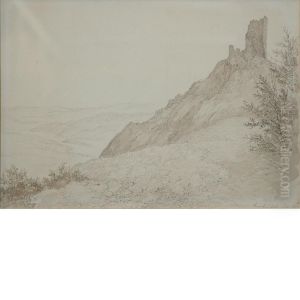Sara Anne Freeman Clarke Paintings
Sara Anne Freeman Clarke, born on February 17, 1808, in Newton, Massachusetts, was an American painter and philanthropist whose contributions to the arts and society were notable during the 19th century. Clarke's artistic journey began in her early years, influenced by the cultural milieu of Boston and its burgeoning art scene. Despite the limited opportunities available to women in the arts during this period, Clarke pursued her passion with determination, seeking education in painting and drawing where she could, often through private tutors and self-instruction.
Clarke's work, primarily in watercolors and oils, reflected her keen observation of the natural world and her interest in capturing the subtleties of light and shadow, a testament to her skill and sensitivity as an artist. Though her oeuvre includes landscapes and still lifes, it is her portraits that are often celebrated for their depth and realism, capturing the essence of her subjects with both precision and empathy.
Beyond her artistic achievements, Sara Anne Freeman Clarke was deeply committed to philanthropy and social reform. She was an active member of the Boston community, where she supported various charitable causes, including education for women and the abolitionist movement. Clarke's home became a salon for intellectuals, artists, and reformers of the day, reflecting her engagement with the critical social and political issues of her time.
Clarke's legacy is also closely tied to her friendship with the renowned author Nathaniel Hawthorne and his wife Sophia Peabody, a gifted painter in her own right. Clarke's support and encouragement of their work exemplify her role as both a patron and an active participant in the intellectual and artistic dialogues of her era.
Sara Anne Freeman Clarke passed away on December 20, 1891. Though her paintings are not widely known today, her contributions to the American art scene and her efforts in philanthropy and social reform have left an indelible mark on the communities she served. Clarke's life and work embody the spirit of an era that witnessed significant transformations in art, society, and the role of women in both domains.
